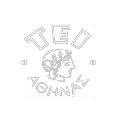Προσαρμοσμένη Κινητική Αγωγή (Θ)
Ενότητες
Αυτισμός και Προσαρμοσμένη Κινητική Δραστηριότητα
Αναπνευστική φυσικοθεραπεία, Πρώιμη κινητοποίηση, είδη κινητοποίησης, προγράμματα βάδισης, ερευνητική τεκμηρίωση.
Βιβλιογραφία
- American Psychiatric Association (2000). Diagnostic and statistical manual of mental disorders: DSM-IV. 4th ed. Washington, DC: American Psychiatric Association.
- Baird, G., Cass, H., & Slonims, V. (2003). Diagnosis of autism. BMJ; 327(7413):488–93.
- Buxbaum, J.D. (2009). Multiple rare variants in the etiology of autism spectrum disorders. Dialogues Clin Neurosci ; 11(1):35–43.
- Crollick, J.L., Mancil, G.R. & Stopka, C. (2006). Physical activity for children with autism spectrum disorder. Teaching elementary Physical education. www. journals.humankinetics.com
- Dawson, G. & Rosanoff, M. (2009). Sports, exercise, and the benefits of physical activity for individuals with autism; 30-33; www. autismspeaks.org
- Engel, A. (2011). Physical activity participation in children with autism spectrum disorders: an exploratory study. Master thesis. https://tspace.library.utoronto.ca
- Gerber, J.S., & Offit, P.A. (2009). Vaccines and autism: a tale of shifting hypotheses. Clin Infect Dis. 48(4):456–61.
- Groft-Jones, M. & Block, M.E. (2006). Strategies for teaching children with autism in physical education. Teaching elementary Physical education. www. journals.humankinetics.com
- Howlin, P., Magiati, I., & Charman, T. (2009). Systematic review of early intensive behavioral interventions for children with autism. Am J Intellect Dev Disabil;114(1):23–41.
- Hutzler, Y. & Sherrill, C. (2007). Defining adapted physical activity: international perspectives. activity. Adapted Physical Activity Quarterly, 24, 1-20.
- Johnson, C.P., Myers, S.M., & Council on Children with Disabilities.(2007). Identification and evaluation of children with autism spectrum disorders. Pediatrics; 120(5):1183–215.
- Krebs Seida, J., Ospina, M.B., Karkhaneh, M., Hartling, L., Smith, V., & Clark, B. (2009). Systematic reviews of psychosocial interventions for autism: an umbrella review. Dev Med Child Neurol; 51(2):95–104.
- Lang, R., Koegel,L.K., Ashbaugh, K, & Regester, A. (2010). Physical exercise and individuals with autism spectrum disorders: a systematic review.
- Lavay, B., French, R., & Henderson, H. (1997). Positive behavior management strategies for educators. Champaign, IL: Human Kinetic
- Menear & Smith, (2008). Physical education for children with autism. Teaching exceptional children; 40(5): 32-37.
- Myers, S.M., Johnson, C.P., Council on Children with Disabilities (2007).Management of children with autism spectrum disorders. Pediatrics;120(5):1162–82
- Newschaffer, C.J., Croen, L.A., Daniels, J. et al. (2007). The epidemiology of autism spectrum disorders. Annu Rev Public Health; 28:235–58.
- Obrusnikova, Ι. & Miccinello, D.L..(2012). Parent perceptions of factors influencing after- school physical activity of children with autism spectrum disorders. Adapted Physical Activity Quarterly, 29, 63-80.
- Pan, C.Y. (2010). Effects of water exercise swimming program on aquatic skills and social behaviors in children with autism spectrum disorders. Autism; 14, 1, 9-28.
- Rapin, I., & Tuchman, R.F. (2008) Autism: definition, neurobiology, screening, diagnosis. Pediatr Clin North Am;55(5):1129–46.
- Reid, G. & Stanish, H. (2003). Professional and disciplinary statu of adapted physical activity. Adapted Physical Activity Quarterly, 20, 213-229.
- Stevenson, P. (2008). High quality physical education for pupils with autism. www.youthsporttrust.org
- Todd, T. & Reid, G. 2006. Increasing physical activity in individuals with autsim. Focus on Autism and other developmental disabilities; 21(3): 167-176.
- Trottier, G., Srivastava, L., & Walker, C.D. (1999). Etiology of infantile autism: a review of recent advances in genetic and neurobiological research. J Psychiatry Neurosci ; 24(2):103–115.
- Yanardag, M., Yilmaz, I., & Aras, O. (2010). Approaches to the teaching Exercise and Sports for the Children with Autism. International Journal of Early Childhood Special Education (INT-JECSE); 2(3), 214-230.
- World Health Organization (2007). International classification of functioning. Disability and Health. Geneva: Author.
Λέξεις Κλειδιά
Αυτισμός, διάχυτες αναπτυξιακές διαταραχές, φυσική δραστηριότητα
